
Photo: Supplied
Justine Murray sits in on a moko session at Cy Mcleod's home at Mount Maunganui. He talks about the physical demands of being a moko artist led to a lifestyle change and his passion for Kapahaka and callisthenics.
Cy Mcleod’s single longest moko session ever was around sixteen hours.
But the physical demands of working as a moko artist have taken a toll on his body and he now suffers from mild arthritis in his back.
These days his sessions are between three to four hours, he says.
“It can be really painful. [You are] hunched over for hours, and yeah, as far as I know, there’s not much of a cure for it, you’ve got to live through it.”
Combating the impact of a sedentary job resulted in a lifestyle change and Cy took up callisthenics, a form of gymnastic type movements as an exercise regime.
Cy uses his social media platforms to promote moko and his passion for health and wellbeing.
Born and raised in Te Kaha, Cy attended Gisborne Boys High School and went on to study at Māori Arts and Design School, Toihoukura in Gisborne.
Uhi Wero Uhi Taia is his home-based studio at Mount Maunganui.
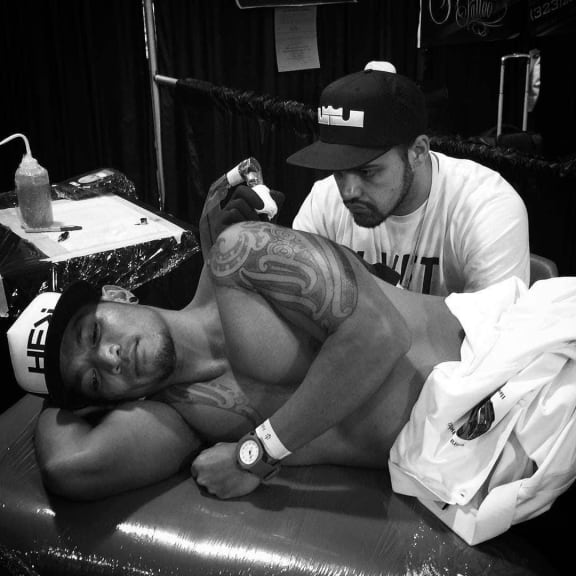
Cy Mcloed says moko is about our connection to the whenua. Photo: Cy Mcloed
Cy believes that moko is about the ambilical tie to the earth.
While running his own studio keeps him busy, Cy travels back home to the East Coast on a regular basis, he is also the tutor of kapahaka group Tauira Mai Tawhiti, a long-time passion of his nurtured at a young age.
“My mum, she was in Te Whanau a Apanui when I was born, that was the roopu I have been brought up in…at the beginning of 2006, we started Tauira Mai Tawhiti… twelve years we’ve been doing competitive Kapahaka for Tauira, but I’ve been in Kapahaka my whole life.“

Photo: RNZ/Justine Murray
Tauira Mai Tawhiti secured second place at this year’s Mataatua regional competition - the qualifier round for next year's Te Matatini in Wellington.
Cy describes the group’s style as simple.
As part of his work he gets to apply moko to a wide range of people, this includes 'kirituhi', the term given to moko applied to non-Māori.
Cy believes kirituhi was part of the colonial history when Pākeha married into Māori families or worked alongside Māori and hapu went on to receive it.
“'Kiri' being skin and 'tuhi' being to mark the skin… You’re marking the skin of somebody who has a different train of thought, has different blood running through their body… I get people here monthly who will literally fly here from the United States [or from] all over Europe that fly in have moko done and fly back… That’s the commitment to wanting to wear moko and that’s what kirituhi is, those sort of people”.
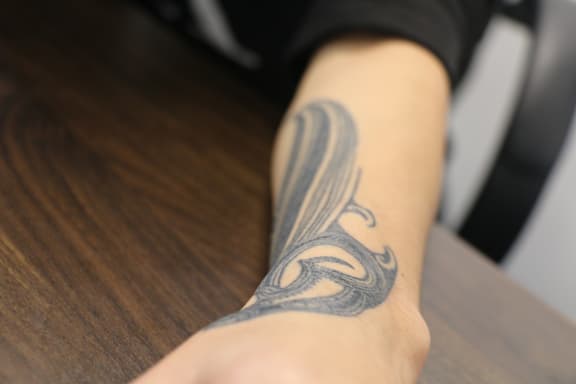
Photo: RNZ/Justine Murray
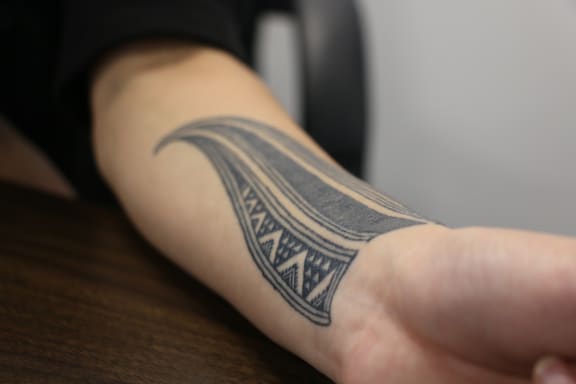
Summer's moko is about her hononga and acknowledges her mum, Tiana Bennett. Photo: RNZ/Justine Murray
Summer Bennett’s moko is about her hononga to her iwi, whakapapa and also an acknowledgement of her mum Tiana Bennett.
“To me, taa moko is a hononga to our land and our ancestors and their stories, it’s also a symbolism of identity to me and a representation of my culture… It’s on my arm and it’s remembering who and where I came from,” she says.
Summer's forearm piece depicts her Tiana who suffers from rheumatoid arthritis.
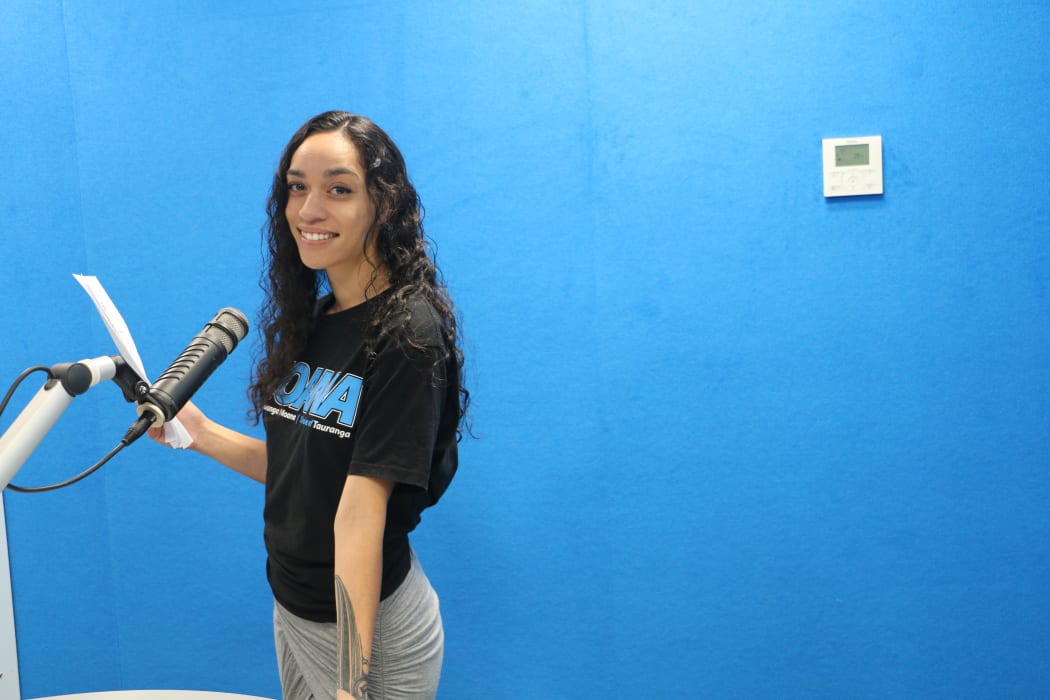
Summer says works at iwi radio station, Moana Radio. Photo: RNZ/Justine Murray
The piece on her chest she drew up herself and had done almost 20 years ago. It represents her home, whanau, the sun, the Mount and her daughter.
“We climbed up the Mount in the morning, saw the sunrise… and then we went to the studio, we had waiata going and all that. It only took an hour. It’s not a big piece but it is special.”
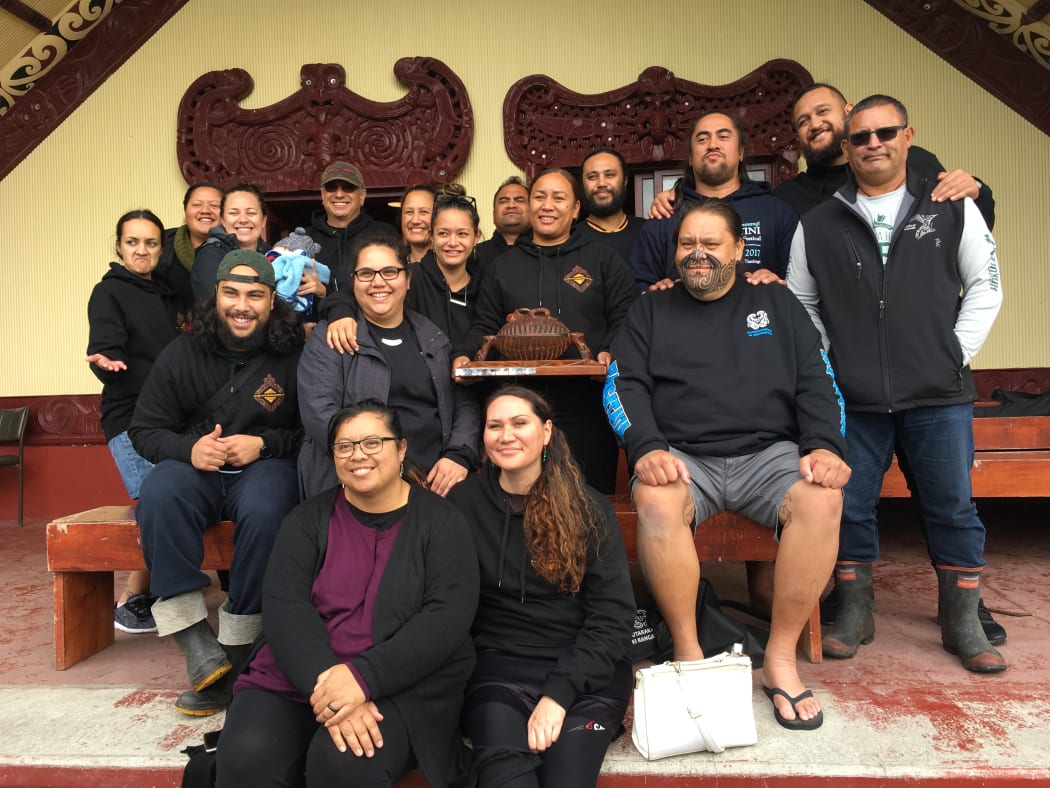
Maia with kapahaka members of Tutara Kauika ki Rangataua and Derek Lardelli (Left side, back) , Whangara, 2017. Photo: RNZ/Justine Murray
When discussions got underway about Maia Wharekura receiving a Mataora, he says wasn’t ready.
"To be blatantly honest, I didn’t want it. I was actually at the time wanting to further my mātauranga through the haahi, through Ratana,” he says.
Maia works as part of the research and preservation unit at Te Rūnanga o Ngai te Rangi.
In 2017, he was part of the team who organised Te Heke o te Rangihouhiri, a five-day pilgrimage for descendants of the eponymous ancestor Te Rangihouhiri.
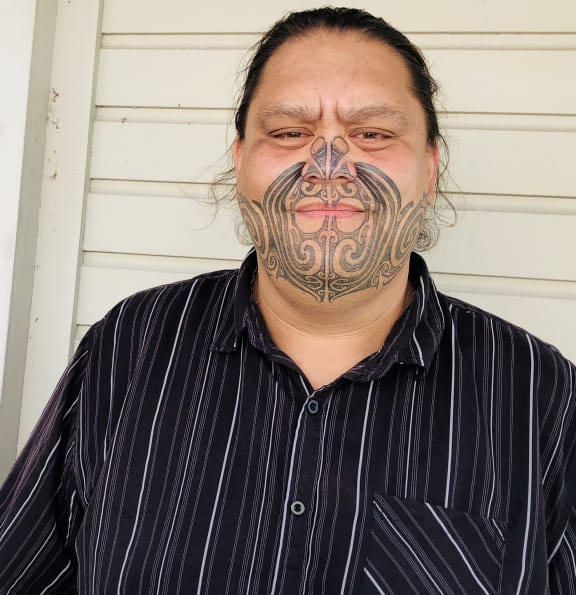
Maia Wharekura works at Te Rūnanga o Ngai te Rangi as part of the research and preservation unit. Photo: RNZ/Justine Murray
Maia had in-depth discussions with moko practitioner Derek Lardelli who discussed the future connections between Ngai te Rangi and Ngāti Konohi of Whangara on the East Coast.
“He laid down the kaupapa…which was whakapapa. Another one was taumau or arranged marriage and the last one was heke toto so the theme running through those things was blood ties.”
Heke Toto is a reference to the application of moko and the act of ‘falling blood’.
Moko would also reaffirm the connections between Ngāti Konohi and Ngai te Rangi whom they lived amongst hundreds of years ago.
Maia had his reservations about getting it done, but after discussions with his Kaumatua, he decided it was the right thing to do.
“I was in rangirua…but I quickly got over that,” he says
Mark Kopua was the artist of Maia’s mum’s moko kauae (facial moko on the chin) and Derek Lardelli applied moko to Reon Tuanau.
Reon’s father Roger also had moko done.
Maia received his moko from Henare Brooking of Rongowhakaata and Ngāti Pōrou who also runs a studio in Gisborne called Mokoira.
“In terms of the design stuff, I like to let the artist come up with it ... We give them the concepts and they come up with the designs…its his mahi, as well, that was the understanding between me and him.”
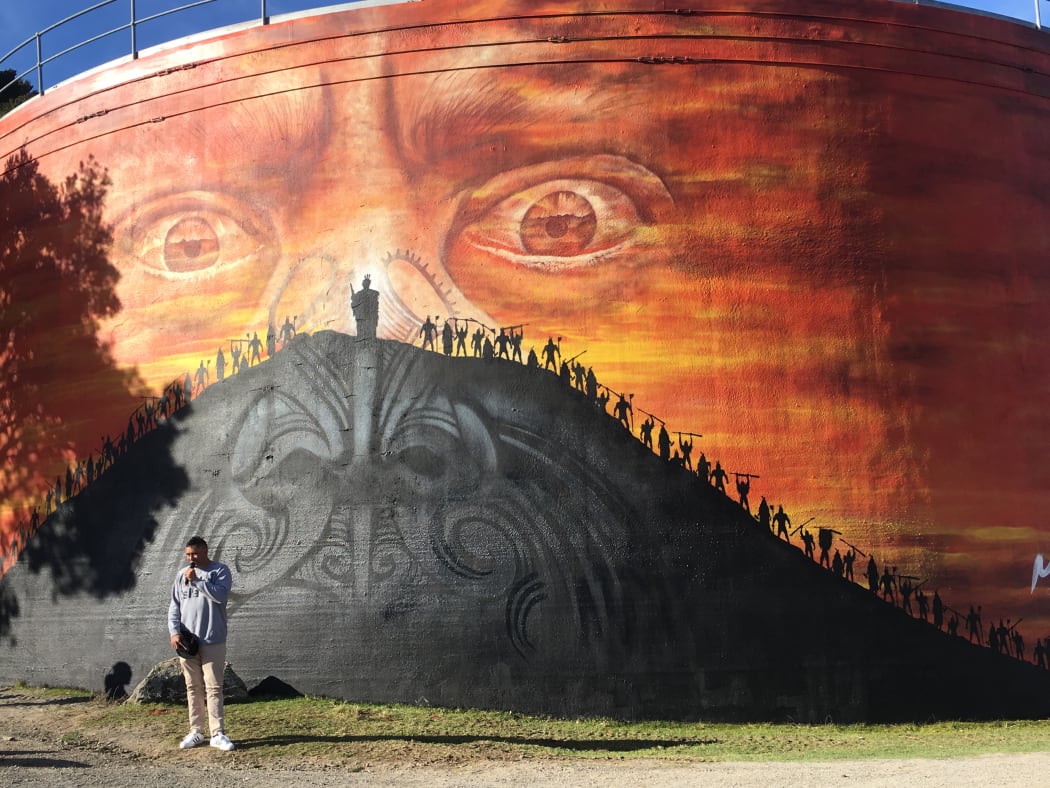
Artist Mr G painted Maia's face on a Water tank situated on Mount Maunganui, 2017. Photo: RNZ/Justine Murray
In 2017 as part of a Mana Moana Protest where Ngai te Rangi are contesting overlapping claims with neighbouring iwi in the Hauraki region, artist Mr G painted Maia’s face on a watertank near the summit of Mount Maunganui.
“I see the perception out there that It can be whakahihi. But at the end of the day that was an artist’s expression, a kanohi was used. I’m not too fussed which one it was. That was the watertank thing.”
When Maia's Mataora was done there were some unwanted stares.
He travelled to Italy in 2017 and was asked to take selfies with many foreigners who were fascinated by it.
From his whanau there was a lighter reaction.
"The thing that cracked me up was when I went home to my kids, they didn't even notice it. I said 'Is there anything different about dad?' and they said 'Nah'."
Kupu Māori/ Māori words
Hononga – A Connection
Mataora – Facial customary Māori tattoo for men
Pakeke – Adults/key figures
Moko – Māori tattoo
Mātauranga – Knowledge
Haahi – Church/Faith
Ratana – A faith/religion founded by Tahupotiki Wiremu Ratana
Tau – To be settled (in mind)
Rangirua - To be of two minds/uncertain
Whakapapa - Genealogy
Whakahihi - Arrogant
Kanohi - Face

